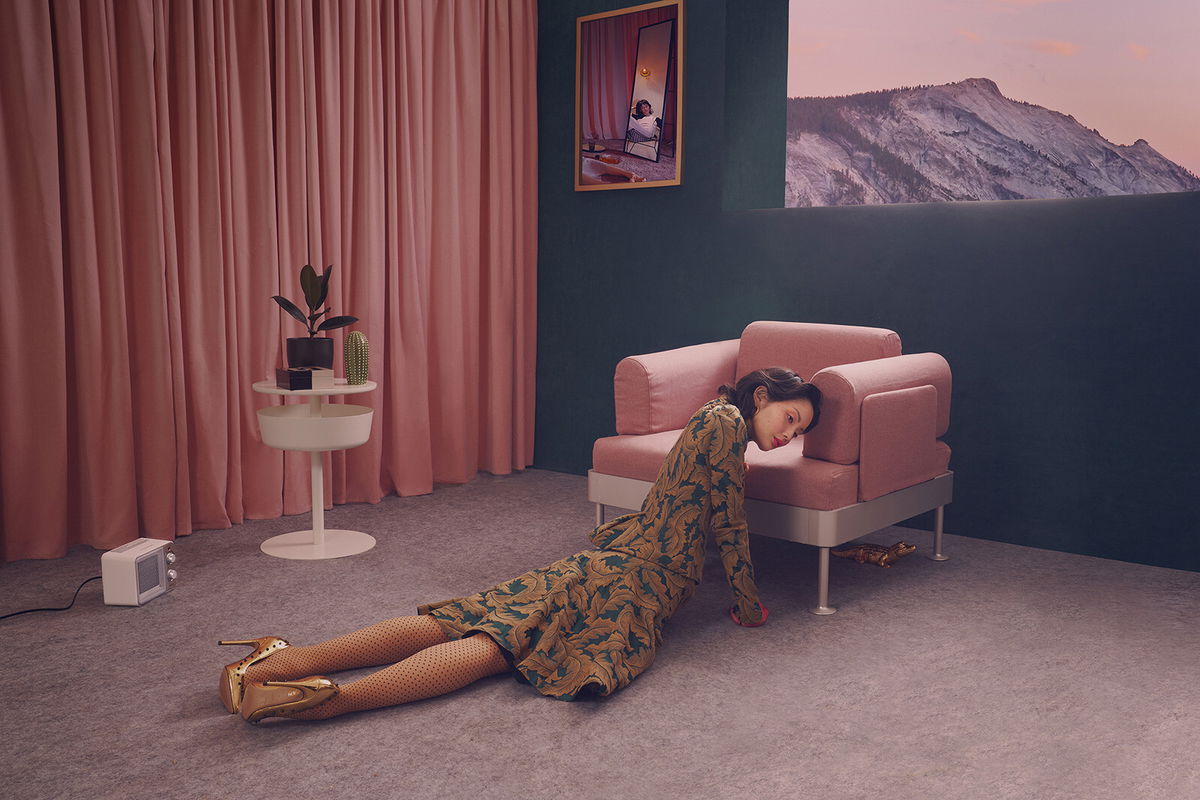This photographer’s surreal images explore the complexity of Asian American identity

An image from Michelle Watt's photo series "The Wait
Harmeet Kaur, CNN
There are those who take photos and those who make photos, to paraphrase the legendary photographer Ansel Adams.
Michelle Watt is firmly the latter. Her richly hued, surrealist compositions — whether she’s shooting a magazine cover or working on a personal project — are brought to life through elaborate productions, involving teams of set designers, wardrobe stylists and makeup artists.
For Watt, creating these intricate images is a form of therapy — a way for her to process traumas and personal experiences.
“It’s not really an inspiration as much as it’s a compulsion to work it out,” she told CNN in a recent interview. “Deconstructing it through staging and storytelling and narrative in these symbolic ways ends up being a really healing way of dealing with those things.”
Her portrait series “Lunar Geisha,” published in Blanc Magazine, is an exploration of Asian American female identity. Using the geisha as a metaphor for the hypersexualization of East Asian women, the photos follow the metamorphosis of a young girl from childhood to adolescence to adulthood. In the first image, the girl is playfully sprawled out across a bench, with fruits and white blossoms in the frame conveying innocence. As the girl matures into a young woman in subsequent photos, the use of bold reds evokes menstruation and sexuality.
Watt, who is Chinese American, says the series examines how East Asian women are perceived by society, how they are thrust into playing certain roles, the ways in which they become complicit in those stereotypes and the ways in which they rebel against them.
“It’s complicated because you want to play that part because you want to belong somewhere,” she said. “But you also don’t really like that part, so you don’t really want to play the part. That’s kind of confusing. Codependency is a huge theme there.”
Those questions and contradictions are ones that Watt grapples with in her own life. When she’s shooting subjects who aren’t Asian American women, she says she wonders about the extent to which her racial and gender identity shapes their interactions. When she’s commissioned to work on projects for clients, she wonders whether she got the gig to meet a diversity quota.
“Am I being hired because I’m being used as a token? Is that okay? Am I going to fight that?” Watt said. “It’s complicated. I always feel like I’m asking these questions.”
Another series titled “The Wait,” also published in Blanc Magazine, explores the concept of liminal spaces. Inspired by the design studio Atelier Aveus’ furniture collection of the same name, the series situates its protagonist in eerily ethereal waiting rooms. In several of the images, the woman sits upright in a chair and looks on wistfully, surrounded by soft shades of seafoam green and pink. As time goes on, the woman’s patience appears to erode and her posture becomes decidedly less restrained. One photo features the woman stretched out across the floor, her head resting against the arm of the chair.
“This one is about being in this space where it’s kind of unclear if you’re trapped in the space or if you’re putting yourself in that space — if it’s a choice for you to be there,” Watt added.
That ambiguous, in-between state of being is all too familiar for Watt.
“I often find myself in these liminal thresholds throughout different areas of my life, especially in regards to identity,” she said. “Being not quite Asian, not quite American, or being a woman wanting to be presentable and look good, but also not wanting to be controlled by it.”
Though many of Watt’s projects are imbued with a sense of gravity, there’s plenty of levity to be found, too. “Fish Food,” a campaign for Sony Alpha Universe, spans the colors of the rainbow and is playful even in its exploration of codependency. The fashion series “Eat Me Drink Me,” shot for Schön! Magazine, is a visual feast of exuberant outfits and objects, while its subject appears to oscillate between feeling trapped by her surroundings and curious about them.
In crafting her dramatic masterpieces, Watt takes inspiration from paintings to cinema to architectural renderings. (“My inspiration comes from everything everywhere all at once,” she says, referencing the surrealist, sci-fi film whose subtle exploration of Asian American identity bears similarities to her own work.)
Once she has a vision of what she wants the photo to look like, the meticulous work of making it begins. Materials are created, sets are assembled, outfits are donned. With the physical elements in place, Watt can begin to identify what finishing touches are needed to give it that signature, fantastical quality. Here, the liminal space is where she thrives.
“After a little bit of breathing room, I start seeing the magic of that unknown,” Watt said. “That’s where the post production process is really fun, because I start seeing things I didn’t see before. Then I can enhance those things I couldn’t envision before.”
Top image: Morning Scene, from Michelle Watt’s series “The Wait”
The-CNN-Wire
™ & © 2022 Cable News Network, Inc., a WarnerMedia Company. All rights reserved.